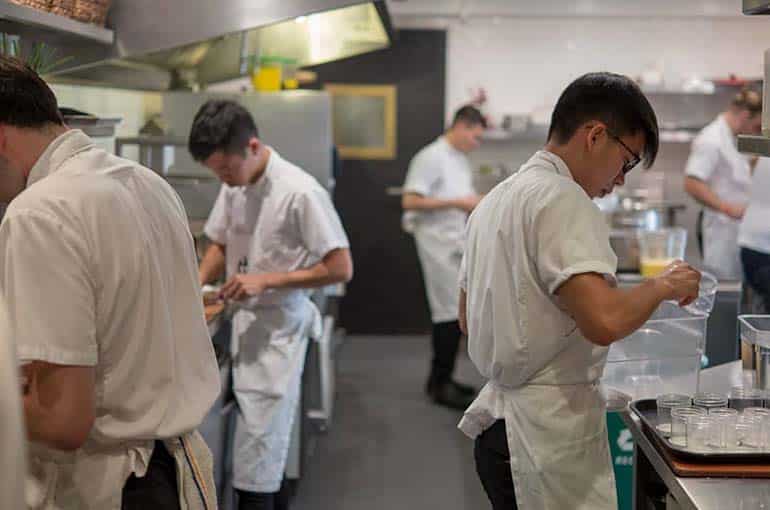Restaurant Marketing – 13 Most Practical Strategies for Restaurant Owners
Before starting to sketch out your making strategies, it is crucial to define who are your target audiences. The more clearly you can define your target audience, the easier it will be to create content, ads, and emails.
According to the Internet World Stats, in 1995, only roughly 0.4% of the world population had an internet connection. 24 years later, in March 2019, it is calculated to be 4.383 billion people are using the internet, which makes up 56.8% of the whole population.
Due to its ubiquity, people use the internet as a tool of measurement for restaurant, they are urged to make sure that the amount of money that they are going to spend is trustworthy, by looking up menus, comparing prices, going through the reviews, etc.
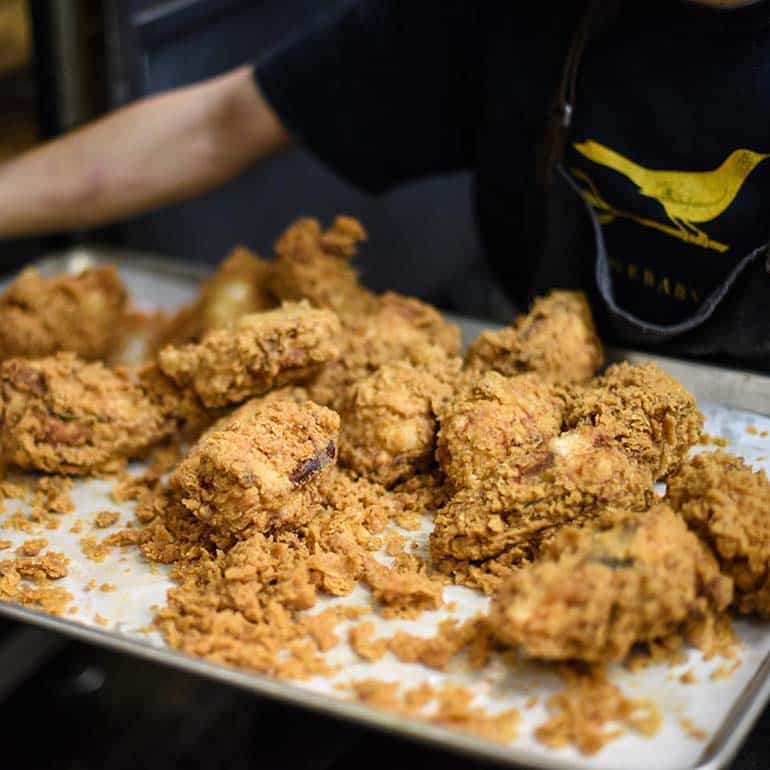
Today, tech-empowered consumers usually post their review online and share their experiences on social media about the food they have been served, which in turn could enhance footfalls at restaurants or dissuade from paying a further visit to those establishments.
For every industry, to survive and flourish in today’s market, it is essential to have a comprehensive marketing strategy, and the restaurant industry has no exception. By doing so, you can build your own brand identity, amplify your reach, create awareness, drive customer engagement, and luckily you can attract a globally spread audience.
In today’s article, 13 most practical marketing strategies for both external (things you can do outside of the restaurant to get customers), and internal ( things you can do inside the restaurant to keep customers and help them to spend more with you) business will be listed in order to help you figure out the most suitable plan in branding your restaurant(s), those will lead you to a higher chance of success.
External restaurant marketing approaches:
Make use of social media:
Apparently, social media marketing plays an extremely important in promoting one’s brand. Via social media, your service would probably have a high chance of connecting to potential customers and grabbing more attention.

So, how can you kill it on social media?
Leverage the power of visual content
It’s a fact that what the eye finds enticing have a certain impact on the food business. Human beings can dismiss most other sensations, but not the evidence of their own eyes. This is something that magicians and marketers alike.
To attract customers to your restaurant, visually captivating pictures of mouth-watering dishes should be shared on image-driven sites like Instagram and Pinterest.
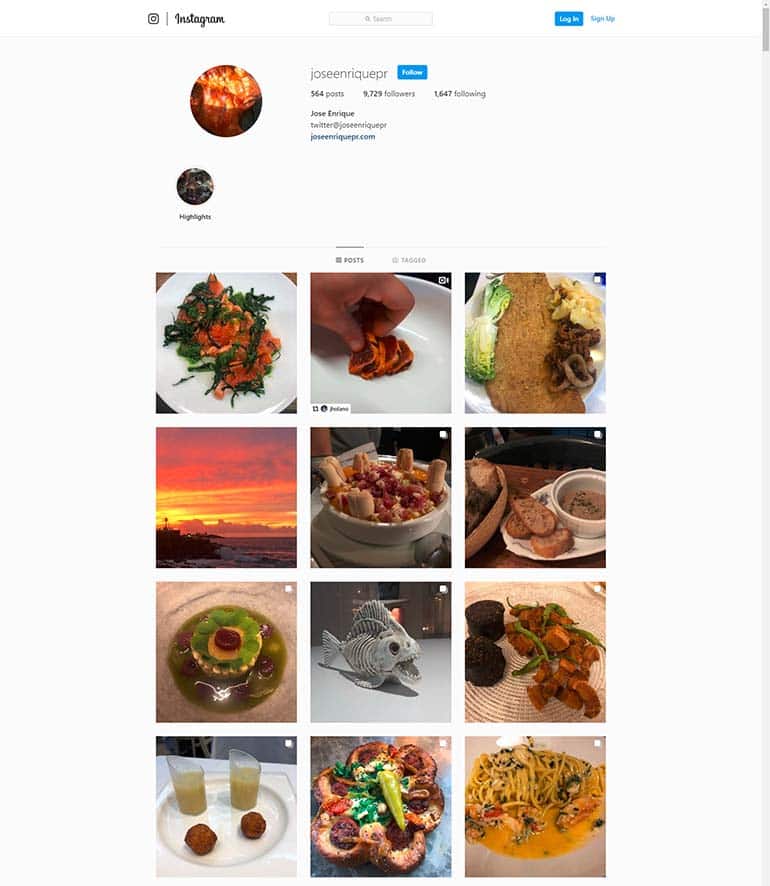
To achieve this goal, you need to take nice attractive pictures. And if you do not have a good sense of art, these are the criteria for photos that needed to be followed:
- High quality: The photo needs to be sharp, bright, clean, and has a level of professionalism.
- Be unique: The more diverse you can make your photos the better so you can keep people engaged and interested in your content.
Besides photos of food, make sure that the dining atmosphere at your restaurants can reach people as wee. This will draw your customers in and give them a taste of the vibe that you have created at your restaurant.
Timing boosts engagement
The qualified content of your post is necessary, but it is not sufficient enough. Creating cleverly thought outposts, sharing HD images, crafting infographics, and funny GIFs would be useless when they can’t be seen and noticed.
It is essential to analyze your traffic and come out with a schedule with high post visibility. By doing this, you need to understand your audience online behavior to some extent and schedule your post timing accordingly.
Stay informative
Basically, using social media as a tool of online marketing is all about making maximum information available to the audience and help them to make the right decisions. Thus, it is necessary to fill out all the fields with relevant information in the ‘About Us’ or the description section on your restaurant’s channels.
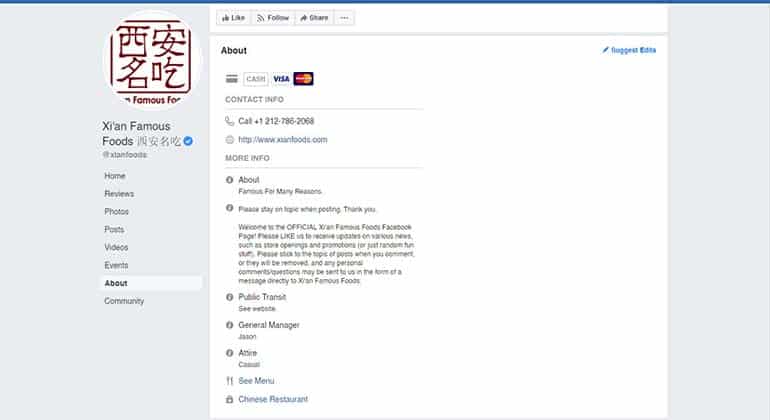
You need to make sure that all the information is up to date, and easy enough for targeted customers to gain useful information as hours of operation, contact information, price range, etc.
Cross-promotion is also a good idea. To be more precise, Instagram or Twitter link could be included in your Facebook bio, or have your Facebook handle mentioned in your Twitter bio.
People are on multiple social media channels and you would want them to connect with you on as many channels as possible.
Don’t be pushy
In the more direct and formal way of saying, don’t be too promotional. The content of your commercial post needs to be creative and somewhat entertaining.
Beyond, having a marketing strategy on social media is not only about spreading your brand but also about carving a space for your restaurant in the customers’ hearts by engaging them.
To engage them, maybe you can ask them a question, take suggestions, seek opinions, interact with them and share their views and opinions with others. This could include liking their posts, replying, sharing and retweeting their replies and images, etc.
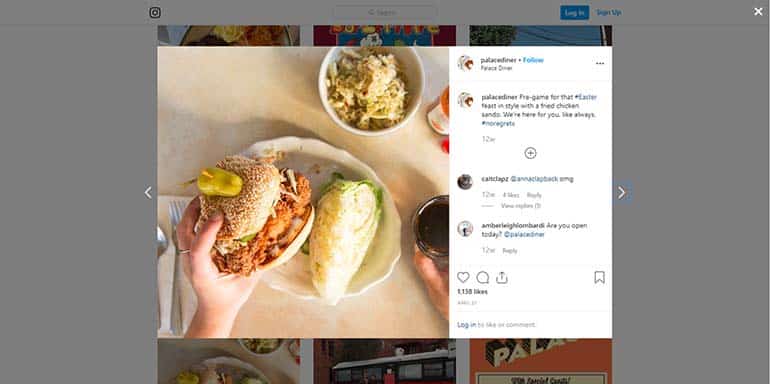
On another hand, customer-generated content not only provides you with a stream of cool content, but they also allow you to create social proof for your restaurant—this, in turn, inspires trust and confidence. Social media platforms should be every restaurant owner’s best friend. For example, having a sign in the front of the restaurant that reads, “Put a picture of your dish on Instagram with the #[restaurant’s name] and we’ll give you a free dessert from our Instagram menu!”, you’ll be able to drum up significant buzz this way.
Handle communication crisis:
It sounds way too serious, right? To put it in a more undramatized way, dealing with bad, negative comments and reviews.
The importance of online reviews cannot be overstated, as most of the customers prefer reading online reviews and giving priority to online reviews over the opinions of friends and family. Also, most of the times, people tend to air their bad experiences in restaurants than good ones. Moreover, positive reviews help your restaurant to gain a higher rank over others on platforms like Yelp, Zomato, Google, and Bing.
So, how can these challenges be overcome?
What you need here are honest reviews, which you need to be proactive and request your customers to rate your service.
Popular surveys claim that, when you ask, 70% of customers will leave a review for your business. So, the idea is to ask!
It is a stupid thing to gamble your restaurant’s online reputation from being diluted by bad comments and reviews. Instead, it’s a great step to gather reviews and engage with each one of them by reply, particularly to the negative ones. This adds to your credibility and your intent on addressing any shortcomings on your part.
Customers reviews give you an insight into your customers’ points of view, which are basically the factors inhibiting the growth of your restaurant and look upon them as rooms where you can still improve.
Setting up a Google Alert is also a practical idea for your business name, so you’ll be notified immediately when someone mentions your name on the internet.
The local SEO essentials:
SEO is definitely a marketing idea worth considering for your restaurant. The keyword ‘restaurants near me’ has 11,093,797 monthly searches on Google. This fact alone should convince you to get your restaurant business listed on major search engines like Google.
Your goal is to be ranked in the local pack, which is also known as the top three Google map spots when users search for a specific keyword like “best hamburger”, “best pizza”, etc. These top three restaurants are going to receive the most traffic simply because they are the first results a user sees.
Here are several tips that help you to get a high rank:
Get good reviews
As mentioned previously, the importance of reviews in creating trust amongst potential customers has been emphasized clearly. You can encourage people to review your business on Yelp, Google, Facebook or whichever platforms you prefer. There will inevitably be bad reviews so make sure you are constantly monitoring comments and reviews so that you can respond to customers wisely.
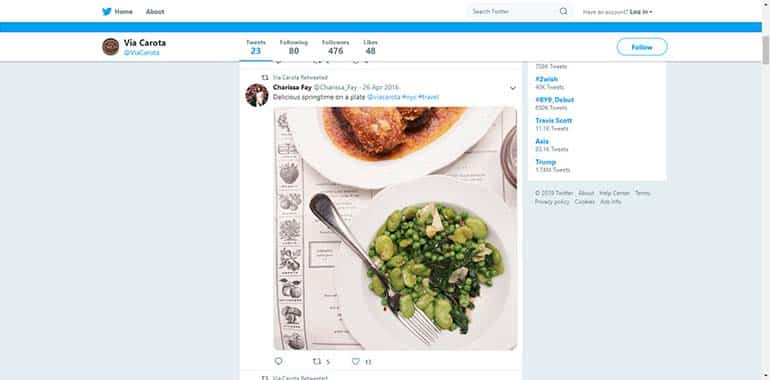
Google My Business and local listings
Your Google My Business shows customers when you are open, your address, contact information and even photos and reviews. Get your business into local listings. Claim it on Yelp, Foursquare, and any other review site. This will increase your chances of appearing in local search.
Be consistent
Just like it’s important to be consistent with your food and dining experience, you need to keep your restaurant name, phone number and address consistent across all platforms. This includes every social media platform and any listing where your restaurant appears. Even the slightest alteration can confuse customers or search engines.
Update your website
Double-check that every detail is correct on your site. This will keep both customers and search engines happy.
Search engines are constantly crawling websites to make sure that they are still active and relevant. If your site hasn’t been touched in years, this might give them a reason to give you a lower ranking in search.
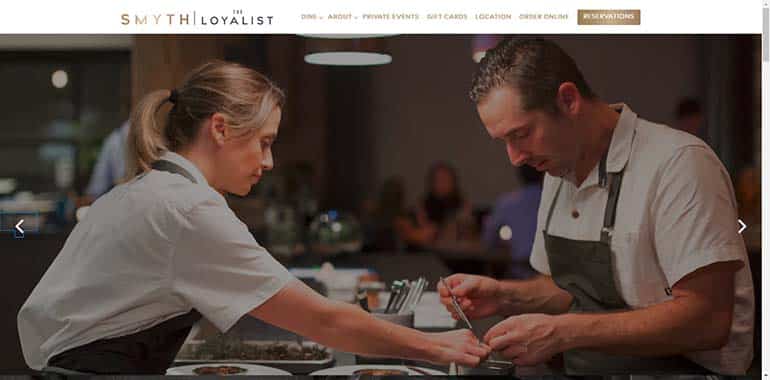
As for your customers, updating your site to reflect your current menu and hours is so important! If a customer comes to your restaurant and it is closed because the hours on your website are incorrect, you have just lost a sale and possibly ruined someone’s day.
Be part of your community:
We’re not exactly about the charity here, those people down the street, working in those offices or mowing their lawns in the surrounding suburbs – they’re your customers. They just don’t know it yet.
At first, get your business involved in the local social media conversations and be active in social activities by networking with local businesses, and even hosting events at your restaurant. If there is a local parade, there’ll be a crowd; entice them in with a themed drink or meal to celebrate to occasion.

Again, this is about becoming a part of the fabric of your community, and in turn, being the favored restaurant of your community. This will make you a much busier restaurant and give you more revenue.
Reach out to your customers via SMS and emails:
Email marketing
According to Campaign Monitor, email marketing provides the highest return on investment out of all digital marketing strategies. For every $1 spent, it generates $38 in revenue.
First, a list of the email should be built. You can collect the customers’ emails by using a pop-up on your website or you can collect them directly in your restaurant, but keep in mind that they will have to be added manually to your email API later.
Once you build up your list, you can start crafting email campaigns as well as automated emails.
The technique is to not hammer them with emails, don’t be pushy (as I have mentioned earlier), and give them a reason to read it. That might be the return of a favorite seasonal meal or a special discount for that month or provide your subscribers with quality content so that they will continue opening your emails and engaging with you.
Text message
If your customers are let’s say, a little more “old fashioned”, they are still likely to be familiar with text messaging or SMS (short message service).
You could offer your customers a small offer (e.g. 15 percent off their bill) if they sign up to your exclusive SMS deals. Each week you send out deals to your SMS subscribers, driving customers back through your doors.
This is a great one for filling up your quieter nights to keep your tables busy and cash flow up.
Befriend with micro-influencers:
I’m sure ‘influencer’ is no new term to you, especially if you’re in digital marketing, but the term micro-influencer might be.
Micro-influencer marketing is taking off and beginning to be just as if not more successful than celebrity influencer campaigns and advertising.
Well, people are more willing to trust the opinions of people they know and look up to, those they feel will give honest opinions, not just rave because they were paid.
So, who actually are they?
Micro-influencers are individuals that have between 1,00 to 1,00,00 followers/ audience members and are considered experts in their respective niche.
It’s time for your restaurant to tap into your foodie market and get them to post photos of your food.
Invite them to come to try your restaurant and ask them to post photos or their thoughts about your food for their followers to see. If you can get a food influencer on your restaurant, it can give you the upper hand on your competition, and hopefully gain some loyal customers!
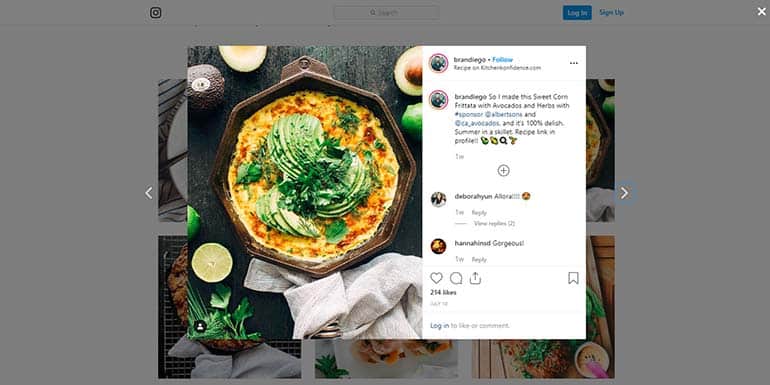
Run sponsored ads on Facebook and Google:
Granted you got to spend some dough on your restaurant advertising campaigns, but the returns could be excellent.
Online restaurant ads let you target a very specific audience by filtering your focus audience by age, gender, and location.
You can also be flexible with your budgets and ad display timings.
What’s more? With Google Ads, you can even rank for keywords that contain your competitors’ names.
The crucial part here is getting creative restaurant marketing ideas to outshine your competitors on social media:
Show off your menu with a video ad
Videos allow you to go more in-depth than photos and can engage potential customers and make it easy for them to consume information.
Use emerging technology
Target recently released an ad with a 360-degree image of their store. Thus, allows their customers to interact with their ads, increasing engagement and making the ad experience fun!
Increase mobile users
If you have an app, you can grow your mobile app user base with app install ads. This encourages users to download your app and use it next time they order.
Social media advertising is the cheapest form of advertising out there! Your social media ad budget will be nothing compared to these old school forms of advertising.
According to the marketers at Square for Restaurants, a Rochester, New York restaurant had a 46 percent increase in business in just one month by using this idea, leading to a $304,356 annual revenue leap.
Promote your brand, your culture via the website:
A website gives you the freedom to craft your identity the way you want. It gives you more control over how you want to interact with your customer. Having a website makes you look more professional, and this is something that your audience expects.
The idea is to have a website that is not only tastefully designed but help your customers find the information that they are looking for. Also, it should have a responsive design.
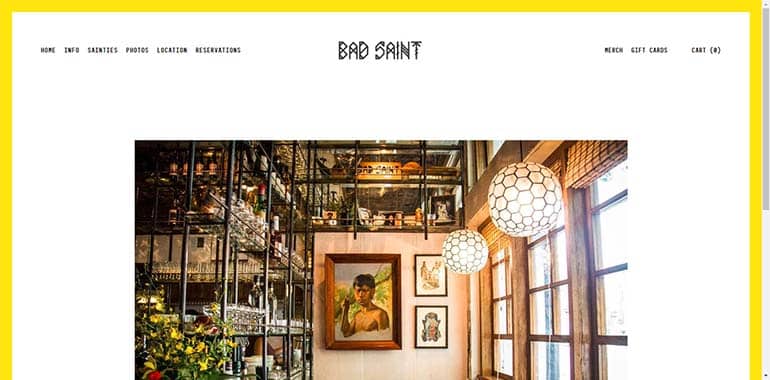
Besides having a user-friendly website, it’s also important that you track user behavior on your website – the sectors that people visit, the amount of time they spend, the terms they use to find your restaurant, where they come from, their demography, etc. Tracking these statistics will help you better optimize your website in the future.
Understand your customers:
While you are busy plating the best meals you can, keeping everyone happy, as well as balancing your books, it’s really easy to overlook your ‘brand’. That’s just marketing speak for understanding your audience. What do they like? What don’t they like? Is low carb important to them?
Talk to them, in-person and online. You’ll see that they will be happy to give you their opinion.
Once you get a feel for what your customers want, you can start to build your brand around that. The better you target your marketing; you’ll find your customers will be of a higher quality and spend a lot more per visit.
Internal restaurant marketing approaches:
Steal competitors’ loyal customers:
Turning your competitors’ customers into your own is a game of love, war, and strategy. To do it effectively, you need to capture their attention and then prove you’re a worthwhile investment.
Bellowed are steps that needed to be done:
Researching
In this step, what you have to do is to understand what makes your potential customers tick.
It’s also wise to survey your customers to gain a deeper understanding of why they picked you over the competition.
Engaging
Next is to get their attention, and the best way to do so is by using highly targeted social media advertising. Facebook and Twitter make it super-simple for you to do this. As they provide features specifically designed for targeting other accounts.
Wooing
Getting those customers to stick around with a free offer for something genuinely valuable and a landing page with one goal: to get them in your funnel.
Capturing
In this step, you make the first sale. And again, we want to remind you that email marketing is the most effective online sales.
Retaining
Retaining customers is all about treating them right.
The tip is to use loyalty programs that provide continuous rewards for each purchase, as opposed to those require a lot of work for future rewards.
Be wise in arranging seat:
It’s as simple as that place your first customers by the window. It will make the restaurant look fuller from the street and every passerby will be able to see your happy customers enjoying your meals.
Partner up with local businesses:
You could promote your business by tying up with other businesses in the area and perhaps offering discounts to one another’s customers. For example, your restaurant can tie up with a big local shop to give a discount for their customers, and that would put both of you in a win-win situation.
There are also a number of companies who might want to give out exclusive discounts to their employees as a perk. You might consider contacting and tying up with some of them.
Moreover, partnering with delivery service is also a smart choice. Though you do have to pay a fee per order, you also cut down on costs for table service, dishwashing and the like. You’ll also pick up new customers, so it’s great advertising.
Know the trick of serving:
One of the most important tricks is not to offer water. By this, we do not mean you can serve water, we just mean don’t put it on the table, as when the customer sees the beverages on your menu, he/ she will be much more likely to pay for that tastier, and more refreshing option.
Now let’s put them into practice!
It would be great if you can follow some of the marketing ideas that we have suggested. But more importantly, you should stay flexible! Some strategies don’t fit with someone, but they may work for others. So, don’t get stuck on one single idea. Change when it is needed. Moreover, there are so many creative restaurant marketing ideas out there that you can utilize for your marketing campaigns.

